Rigid Plastic
Rigid plastics are stiff, durable, and structurally stable polymers used in injection molding to manufacture strong, impact-resistant components. These materials maintain their shape under stress and do not easily bend or deform.
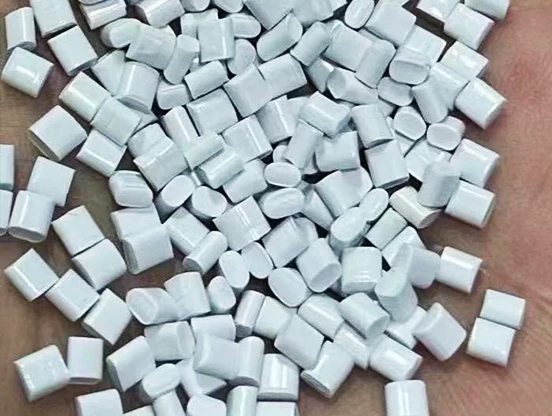
ABS
Acrylonitrile Butadiene Styrene (ABS) is a tough, lightweight thermoplastic known for its impact resistance and ease of machining. Its durability and versatility make it ideal for automotive parts, electronics housings, consumer goods, and 3D printing.
Key Properties of ABS:
- Impact Resistance: High toughness, making it suitable for durable parts.
- Temperature Resistance: Performs well in a temperature range of -20°C to 80°C (-4°F to 176°F).
- Chemical Resistance: Resistant to acids, alkalis, and oils.
- Dimensional Stability: Maintains shape and accuracy during molding.
- Aesthetic Appeal: Offers a smooth, glossy finish and can be easily painted or plated.
Applications of ABS in Injection Molding:
- Automotive: Dashboards, panels, trims, and interior components.
- Electronics: Housings for computers, monitors, and keyboards.
- Consumer Goods: Toys like LEGO bricks, luggage shells, and kitchen appliances.
- Industrial: Tool casings, protective covers, and fittings.
- Medical: Lightweight, durable components for non-critical applications.
ABS is valued for its strength, versatility, and cost-effectiveness, making it a top choice in various industries for injection-molded products.
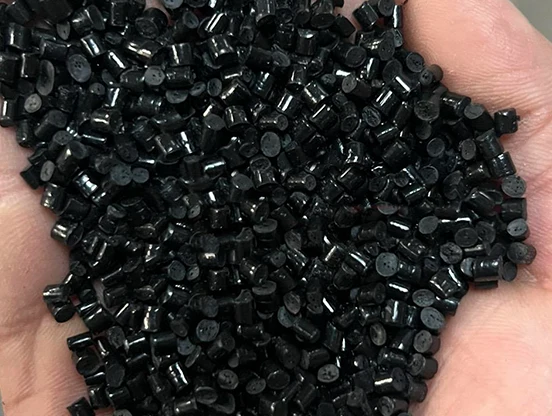
ABS+PC
ABS+PC (Acrylonitrile Butadiene Styrene + Polycarbonate) is a blend of two popular thermoplastics—ABS and PC—used in injection molding to combine the strengths of both materials. This material offers the toughness, impact resistance, and ease of processing of ABS, along with the strength, rigidity, and heat resistance of PC.
Key Properties of ABS+PC:
- Impact Resistance: Superior toughness, even at low temperatures.
- Heat Resistance: Performs well in high-temperature environments.
- Strength and Durability: Enhanced mechanical strength compared to standard ABS.
- Dimensional Stability: Excellent stability and precision during molding.
- Aesthetic Quality: Smooth, glossy finish with the ability to be painted or plated.
Applications of ABS+PC in Injection Molding:
- Automotive: Interior and exterior components, dashboards, and trims.
- Electronics: Laptop housings, smartphone cases, and monitors.
- Consumer Products: Power tools, appliance housings, and luggage.
- Medical Devices: Non-critical medical equipment requiring durability and chemical resistance.
- Industrial: Protective casings and enclosures.
The combination of ABS and PC results in a material with a balanced profile of strength, toughness, and aesthetics, making it a popular choice for demanding applications.
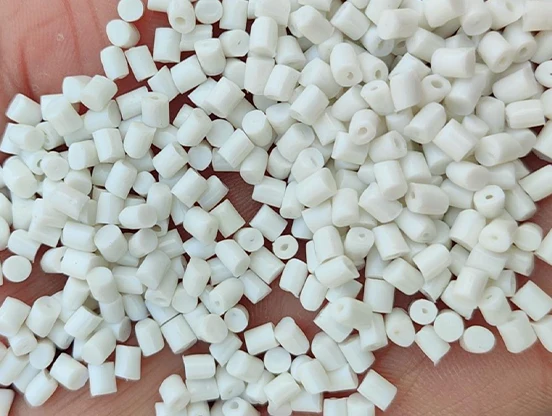
HDPE
HDPE (High-Density Polyethylene) is a strong, durable, and widely used thermoplastic polymer made from petroleum. It is popular in injection molding for its excellent mechanical properties, chemical resistance, and versatility.
Key Properties of HDPE:
- High Strength-to-Density Ratio: Strong yet lightweight.
- Chemical Resistance: Resistant to most acids, alkalis, and solvents.
- Impact Resistance: Good resistance to impact, even at low temperatures.
- Moisture Resistance: Low water absorption, ideal for waterproof applications.
- Food-Safe Grades: Non-toxic and FDA-approved for food contact.
- UV Resistance: Can be stabilized for outdoor use with UV additives.
Applications of HDPE in Injection Molding:
- Packaging: Bottles, caps, and containers for food, beverages, and chemicals.
- Household Products: Bins, kitchenware, and storage containers.
- Construction: Pipes, fittings, and protective barriers.
- Automotive: Fuel tanks, bumpers, and vehicle components.
- Medical: Lab containers and medical equipment.
- Toys: Safe, durable toys and playground equipment.
HDPE’s combination of toughness, chemical resistance, and cost-effectiveness makes it a popular choice for a variety of applications across industries.
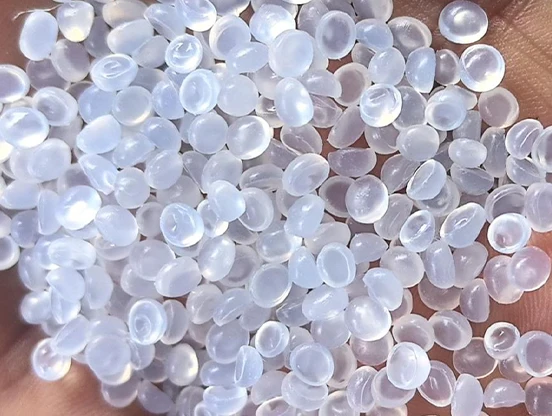
LDPE
LDPE (Low-Density Polyethylene) is a thermoplastic polymer known for its flexibility, toughness, and chemical resistance. Compared to HDPE (High-Density Polyethylene), LDPE has a lower density, making it more flexible and softer. It is widely used in injection molding for producing lightweight, durable parts.
Key Properties of LDPE:
- Flexibility: Soft and pliable, with excellent elongation properties.
- Chemical Resistance: Resistant to acids, bases, and many chemicals.
- Moisture Resistance: Low water absorption, ideal for moisture-sensitive applications.
- Impact Resistance: Good impact resistance, even at low temperatures.
- Electrical Insulation: Effective electrical insulator.
- Transparency: Often semi-transparent, suitable for clear or translucent products.
Applications of LDPE in Injection Molding:
- Packaging: Lids, caps, and containers for food and beverages.
- Consumer Goods: Squeeze bottles, kitchenware, and toys.
- Medical Devices: Dropper bottles, squeeze tubes, and disposable labware.
- Construction: Flexible tubing, protective sheaths, and wiring insulation.
- Agriculture: Irrigation components and greenhouse films.
LDPE’s flexibility, lightweight nature, and resistance to moisture and chemicals make it an ideal material for a variety of everyday products.
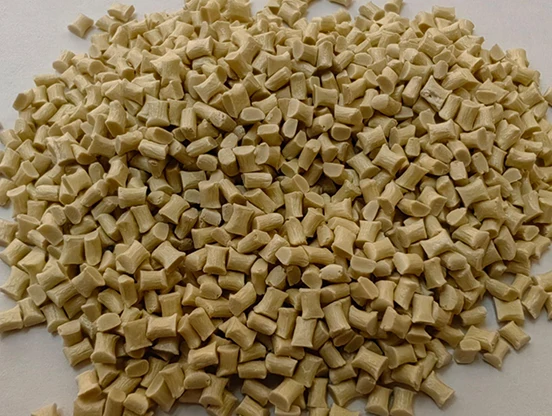
LCP
LCP (Liquid Crystal Polymer) is a high-performance thermoplastic with unique molecular structures that exhibit liquid crystalline properties. Known for its exceptional mechanical strength, thermal stability, and chemical resistance, LCP is widely used in injection molding for intricate, high-precision components.
Key Properties of LCP:
- High Thermal Stability: Withstands temperatures from -200°C to 300°C (-328°F to 572°F) without significant degradation.
- Dimensional Stability: Minimal shrinkage and warping, ensuring tight tolerances in molded parts.
- Chemical Resistance: Resistant to acids, bases, solvents, and fuels.
- Electrical Insulation: Excellent dielectric properties, making it ideal for electronic applications.
- Low Moisture Absorption: Retains stability even in humid environments.
- High Strength-to-Weight Ratio: Strong yet lightweight.
Applications of LCP in Injection Molding:
- Electronics: Connectors, sockets, and microelectronic components.
- Automotive: Electrical components, sensors, and under-the-hood parts.
- Medical Devices: Surgical instruments and precision medical components.
- Aerospace: Lightweight, high-strength parts for aircraft and spacecraft.
- Industrial: High-performance seals, gears, and pump components.
LCP’s ability to maintain strength, precision, and stability under extreme conditions makes it a preferred material for advanced applications in electronics, automotive, and aerospace industries.

Nylon 6
Nylon 6, also known as Polyamide 6 (PA6), is a versatile engineering thermoplastic widely used in injection molding. It is renowned for its excellent mechanical properties, toughness, and chemical resistance. Unlike Nylon 6,6, which has a similar structure, Nylon 6 has a slightly lower melting point and better processability.
Key Properties of Nylon 6:
- High Strength and Durability: Excellent tensile strength and impact resistance.
- Wear and Abrasion Resistance: Ideal for parts exposed to friction and wear.
- Chemical Resistance: Resistant to oils, fuels, and many chemicals, but sensitive to strong acids and bases.
- Moisture Absorption: Can absorb moisture, affecting dimensional stability (can be reduced with additives).
- Temperature Resistance: Performs well between -40°C to 150°C (-40°F to 302°F).
- Lightweight: Strong yet lightweight, making it ideal for weight-sensitive applications.
Applications of Nylon 6 in Injection Molding:
- Automotive: Engine components, bushings, bearings, and under-the-hood parts.
- Electronics: Electrical housings, connectors, and cable insulation.
- Industrial: Gears, rollers, pulleys, and machine parts.
- Consumer Goods: Power tool casings, sports equipment, and appliance parts.
- Textiles: Used in fibers for fabrics and carpets.
Nylon 6 is valued for its strength, wear resistance, and versatility, making it a preferred material in demanding, high-performance applications.
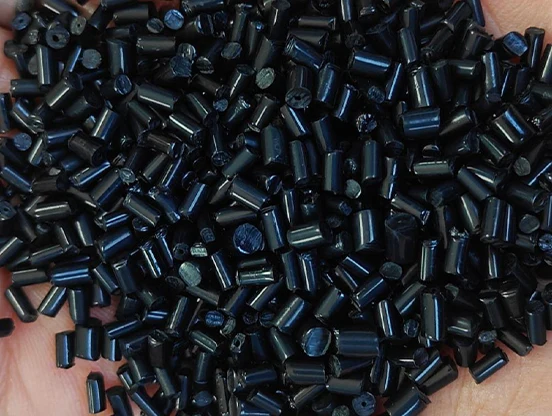
Nylon 66
Nylon 66 (Polyamide 66 or PA66) is a high-performance engineering thermoplastic widely used in injection molding. It is made from hexamethylene diamine and adipic acid, resulting in a highly crystalline structure that offers superior mechanical properties.
Key Properties of Nylon 66:
- High Strength and Stiffness: Stronger and more rigid than Nylon 6.
- Excellent Heat Resistance: Performs well in temperatures up to 180°C (356°F).
- Wear and Abrasion Resistance: Ideal for applications exposed to friction.
- Chemical Resistance: Resistant to oils, fuels, and many chemicals, but sensitive to acids and bases.
- Low Creep: Maintains dimensional stability under long-term loads.
- Moisture Absorption: Absorbs moisture, which can affect properties but can be managed with stabilizers.
Applications of Nylon 66 in Injection Molding:
- Automotive: Engine components, radiator tanks, and gears.
- Electronics: Electrical connectors, switches, and cable insulation.
- Industrial: Bearings, bushings, and wear-resistant machine parts.
- Consumer Products: Power tool casings, sports equipment, and appliance parts.
- Textiles: Fibers for fabrics and carpeting.
Nylon 66 is favored for its excellent mechanical strength, heat resistance, and durability, making it suitable for demanding and high-stress environments.
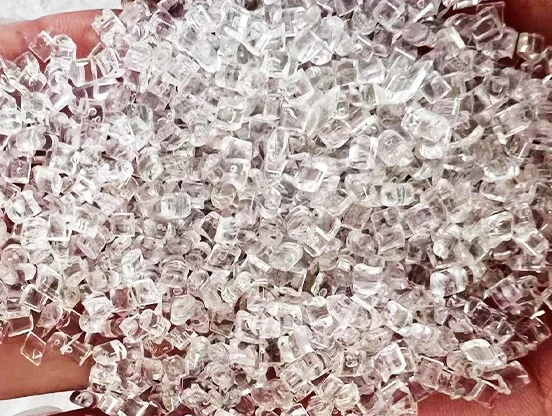
Nylon 11
Nylon 11 (Polyamide 11 or PA11) is a high-performance, bio-based thermoplastic derived from renewable castor oil. It is used in injection molding for applications requiring flexibility, chemical resistance, and impact strength. Nylon 11 is known for its lower moisture absorption compared to other nylons, resulting in better dimensional stability.
Key Properties of Nylon 11:
- Flexibility and Toughness: Excellent flexibility, making it suitable for dynamic applications.
- Chemical Resistance: Highly resistant to oils, fuels, solvents, and chemicals.
- Low Moisture Absorption: Better dimensional stability and minimal property changes in humid environments.
- Impact Resistance: Strong impact resistance, even at low temperatures.
- Lightweight: Strong yet lightweight, ideal for weight-sensitive applications.
- Bio-Based Origin: Derived from castor oil, making it more sustainable.
Applications of Nylon 11 in Injection Molding:
- Automotive: Fuel lines, tubing, connectors, and brake components.
- Medical Devices: Catheters, tubing, and prosthetics due to biocompatibility.
- Sports and Leisure: Protective gear, goggles, and durable sports equipment.
- Electronics: Cable insulation, wire sheathing, and flexible connectors.
- Industrial: Pneumatic and hydraulic hoses, seals, and fittings.
Nylon 11 is valued for its versatility, strength, and environmental benefits, making it a preferred choice for demanding applications across automotive, medical, and industrial sectors.
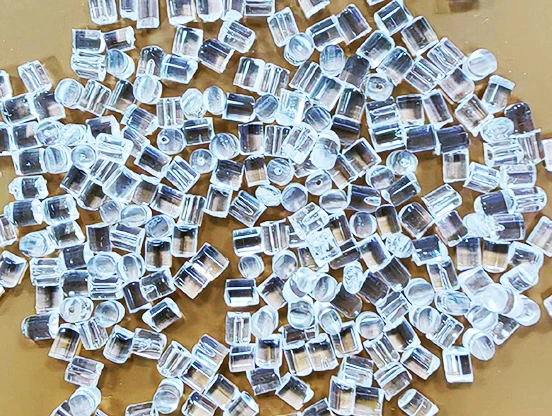
Nylon 12
Nylon 12 (Polyamide 12 or PA12) is a high-performance thermoplastic used in injection molding for applications requiring flexibility, chemical resistance, and dimensional stability. It is synthesized from laurolactam, resulting in a material with a more stable and less hygroscopic structure than other nylons.
Key Properties of Nylon 12:
- Low Moisture Absorption: Maintains excellent dimensional stability even in humid conditions.
- Chemical Resistance: Resistant to oils, fuels, solvents, and many chemicals.
- Flexibility and Toughness: High impact strength and flexibility, especially at low temperatures.
- Lightweight: Strong yet lightweight, making it ideal for weight-sensitive applications.
- Wear and Abrasion Resistance: Durable in dynamic and high-friction applications.
- UV and Weather Resistance: Can withstand outdoor exposure with minimal degradation.
Applications of Nylon 12 in Injection Molding:
- Automotive: Fuel lines, brake tubing, cable sheaths, and connectors.
- Electronics: Wire insulation, cable coatings, and electronic housings.
- Medical Devices: Catheters, tubing, and biocompatible components.
- Industrial: Pneumatic and hydraulic hoses, seals, and fittings.
- Sports and Recreation: Protective gear, goggles, and flexible sports equipment.
Nylon 12 is prized for its excellent balance of strength, flexibility, and stability, making it suitable for critical applications in automotive, medical, and industrial sectors.
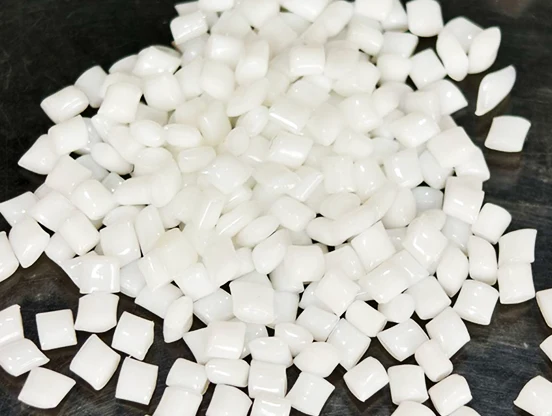
PBT
PBT (Polybutylene Terephthalate) is a high-performance engineering thermoplastic used in injection molding for its strength, toughness, and excellent dimensional stability. It is part of the polyester family and is known for its fast crystallization, making it well-suited for high-speed production.
Key Properties of PBT:
- High Strength and Stiffness: Strong, rigid material with excellent impact resistance.
- Dimensional Stability: Minimal shrinkage and warping, allowing for precise, complex molding.
- Chemical Resistance: Resistant to many chemicals, solvents, oils, and greases.
- Electrical Insulation: Excellent dielectric properties, making it ideal for electronic applications.
- Moisture Resistance: Low water absorption, maintaining stability in humid environments.
- Heat Resistance: Good thermal stability, withstanding temperatures up to 150°C (302°F).
Applications of PBT in Injection Molding:
- Automotive: Connectors, switches, sensors, and headlight components.
- Electronics: Electrical housings, terminal blocks, and plug connectors.
- Industrial: Gears, bearings, and mechanical components.
- Consumer Goods: Appliance components, handles, and power tool casings.
- Medical Devices: Non-critical components requiring chemical resistance and durability.
PBT’s combination of strength, chemical resistance, and electrical insulation makes it a top choice for automotive, electronics, and industrial applications.
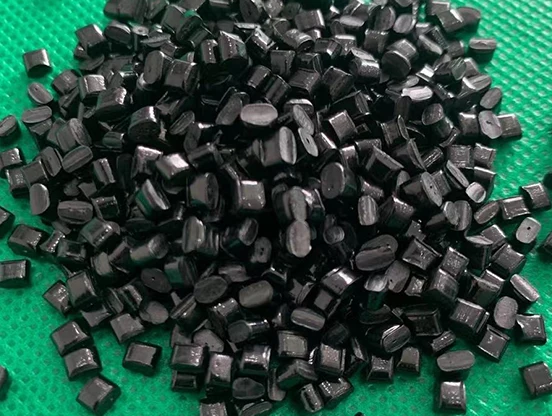
PC
Polycarbonate (PC) is a strong, impact-resistant thermoplastic widely used in CNC machining for its durability and optical clarity. It offers excellent heat resistance, high toughness, and good dimensional stability, making it ideal for applications such as protective covers, optical lenses, and industrial components. With its lightweight nature and resistance to impact and chemicals, PC is a versatile material for precision-machined parts in various industries.
Key Properties of PC:
- High Impact Resistance: Exceptional toughness, even at low temperatures.
- Optical Clarity: Transparent with high light transmission, similar to glass.
- Heat Resistance: Withstands temperatures up to 135°C (275°F) without significant degradation.
- Dimensional Stability: Low shrinkage and excellent precision for complex parts.
- Electrical Insulation: Good dielectric properties, suitable for electronic components.
- UV Resistance: Can be enhanced with stabilizers for outdoor use.
- Chemical Resistance: Moderate resistance to acids and alcohols, but sensitive to organic solvents.
Applications of PC in Injection Molding:
- Electronics: Housings, displays, connectors, and switch covers.
- Automotive: Headlamp lenses, instrument panels, and interior components.
- Medical Devices: Non-critical medical equipment, protective eyewear, and face shields.
- Consumer Products: Safety goggles, protective cases, and water bottles.
- Construction: Skylights, window glazing, and architectural panels.
PC’s combination of strength, clarity, and versatility makes it ideal for applications where durability and transparency are crucial.
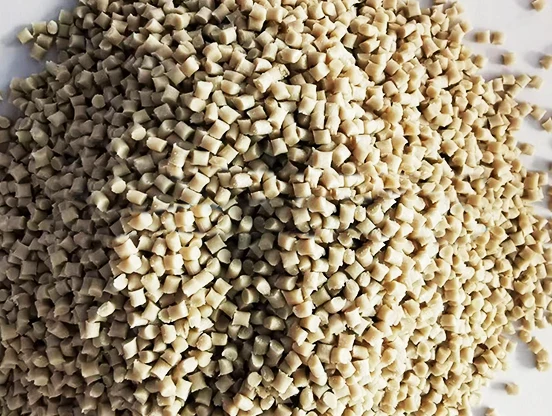
PEEK
PEEK (Polyether Ether Ketone) is a high-performance engineering thermoplastic used in injection molding for its exceptional strength, thermal stability, and chemical resistance. It belongs to the polyaryletherketone (PAEK) family and is known for its ability to withstand extreme conditions.
Key Properties of PEEK:
- High Strength and Stiffness: Maintains excellent mechanical properties under stress.
- Thermal Resistance: Withstands continuous use temperatures up to 250°C (482°F) and short-term exposure up to 300°C (572°F).
- Chemical Resistance: Resistant to most chemicals, acids, bases, and organic solvents.
- Dimensional Stability: Low shrinkage, minimal warping, and tight tolerances.
- Wear and Abrasion Resistance: Exceptional durability under friction and load.
- Low Flammability: Inherently flame-retardant with low smoke emission.
- Biocompatibility: Suitable for medical implants and devices.
Applications of PEEK in Injection Molding:
- Aerospace: Aircraft components, insulators, and high-strength fasteners.
- Automotive: Engine components, transmission parts, and electrical connectors.
- Medical Devices: Surgical instruments, dental devices, and implants.
- Electronics: High-performance connectors, semiconductor machinery, and circuit boards.
- Industrial: Gears, bearings, seals, and pump components.
- Oil and Gas: Components exposed to high temperatures and harsh chemicals.
PEEK’s combination of strength, chemical resistance, and thermal stability makes it a preferred material for demanding, high-performance applications in industries requiring reliability and precision.
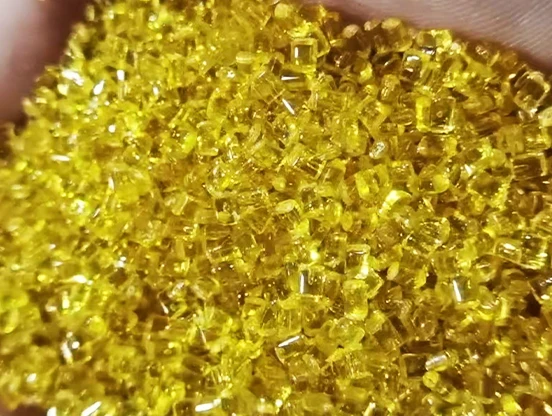
PEI
PEI offers excellent mechanical properties, chemical resistance, and flame retardancy, making it ideal for aerospace, medical, and industrial applications. With its ability to withstand high temperatures and maintain structural integrity, PEI is a reliable choice for precision-machined components requiring durability and performance.
Key Characteristics of PEI:
- High Heat Resistance – Can withstand temperatures up to 338°F (170°C) continuously.
- Excellent Mechanical Strength – Offers high tensile and flexural strength.
- Dimensional Stability – Maintains shape even under high temperatures and loads.
- Chemical Resistance – Resistant to many chemicals, including acids and solvents.
- Flame Retardant – Naturally flame-resistant, with a UL 94 V-0 rating.
- Good Electrical Properties – Used in electrical and electronic components.
Common Applications of PEI in Injection Molding:
- Aerospace – Aircraft components, connectors, and insulators.
- Medical Devices – Sterilizable surgical instruments and housings.
- Automotive – High-temperature-resistant under-the-hood parts.
- Electronics – Circuit board insulators and connectors.
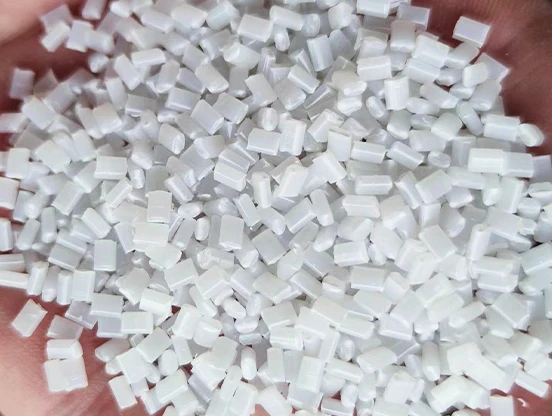
PET
PET (Polyethylene Terephthalate) is a thermoplastic polymer commonly used in injection molding for applications that require high strength, chemical resistance, and good dimensional stability.
Key Characteristics of PET for Injection Molding:
- High Strength & Stiffness – Offers excellent mechanical properties.
- Good Chemical Resistance – Resistant to acids, solvents, and oils.
- High Heat Resistance – Can withstand temperatures up to 250°F (121°C).
- Dimensional Stability – Low shrinkage, making it suitable for precision parts.
- Good Barrier Properties – Provides resistance to moisture and gases.
- Recyclability – Widely recycled and eco-friendly.
Common Applications of PET in Injection Molding:
- Packaging – Used for bottle preforms (e.g., water and soda bottles).
- Automotive Parts – Components like gears, housings, and covers.
- Electrical Components – Insulators, switches, and connectors.
- Consumer Goods – Kitchen appliances, food containers, and cosmetic packaging.
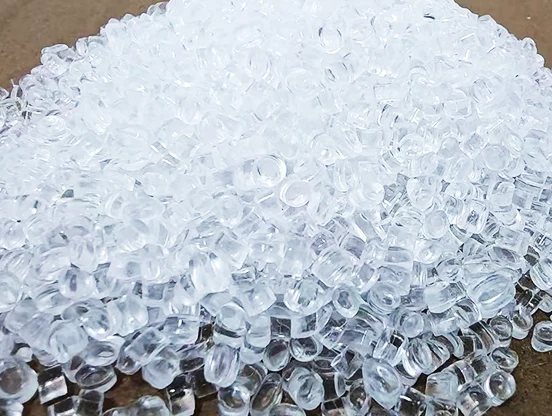
PMMA
PMMA (Polymethyl Methacrylate), also known as acrylic, is a transparent thermoplastic used in injection molding for applications requiring clarity, weather resistance, and durability.
Key Characteristics of PMMA for Injection Molding:
- High Transparency – Offers up to 92% light transmission, similar to glass.
- Excellent Weather Resistance – UV-resistant, making it ideal for outdoor use.
- Good Mechanical Strength – Stronger and lighter than glass.
- Scratch Resistance – More resistant than many plastics, such as polycarbonate (PC).
- Chemical Resistance – Resists acids, bases, and cleaning agents.
- Good Dimensional Stability – Low shrinkage and high precision in molding.
Common Applications of PMMA in Injection Molding:
- Automotive – Light covers, dashboards, and instrument panels.
- Optical Components – Lenses, display screens, and light guides.
- Medical Devices – Transparent housings and dental applications.
- Consumer Goods – Signage, cosmetic packaging, and picture frames.
- Lighting – LED light covers and diffusers.

POM
POM (Polyoxymethylene), also known as acetal or Delrin® (DuPont’s brand), is a high-performance engineering thermoplastic widely used in injection molding for its strength, low friction, and dimensional stability.
Key Characteristics of POM for Injection Molding:
- High Strength & Stiffness – Excellent mechanical properties and durability.
- Low Friction & Wear Resistance – Ideal for moving parts like gears and bearings.
- Excellent Dimensional Stability – Low shrinkage, ensuring precise molding.
- Good Chemical Resistance – Resistant to fuels, solvents, and oils.
- High Fatigue & Creep Resistance – Maintains shape under stress and load.
- Moisture Resistance – Low water absorption compared to other plastics.
Common Applications of POM in Injection Molding:
- Automotive Parts – Fuel system components, gears, and fasteners.
- Industrial Machinery – Bearings, rollers, and conveyor belt parts.
- Electrical Components – Connectors, switches, and insulators.
- Consumer Products – Zippers, buckles, and locks.
- Medical Devices – Inhalers and surgical instrument components.
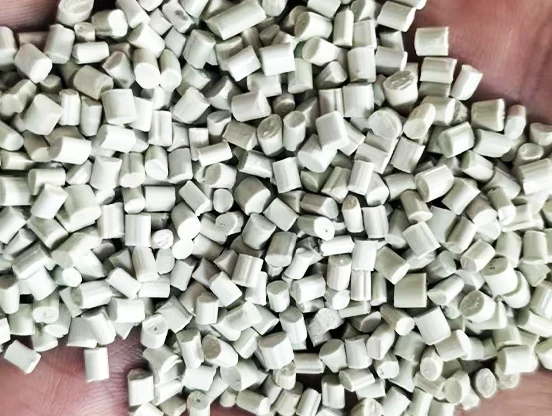
PP
PP (Polypropylene) is a versatile thermoplastic polymer widely used in injection molding due to its lightweight, chemical resistance, and durability.
Key Characteristics of PP for Injection Molding:
- High Chemical Resistance – Resistant to acids, bases, and solvents.
- Good Impact Strength – Tough and flexible, especially with copolymer grades.
- Low Density – One of the lightest plastics, making it cost-effective.
- Moisture Resistance – Does not absorb water, suitable for humid environments.
- Good Fatigue Resistance – Can endure repeated bending without breaking (e.g., living hinges).
- Heat Resistance – Can withstand moderate heat (up to 100–120°C depending on the grade).
Common Applications of PP in Injection Molding:
- Packaging – Bottle caps, food containers, and storage bins.
- Automotive – Bumpers, dashboards, and interior trims.
- Medical Devices – Syringes, pill bottles, and medical trays.
- Consumer Goods – Toys, furniture, and household appliances.
- Textiles – Woven bags, ropes, and carpets (as PP fibers).
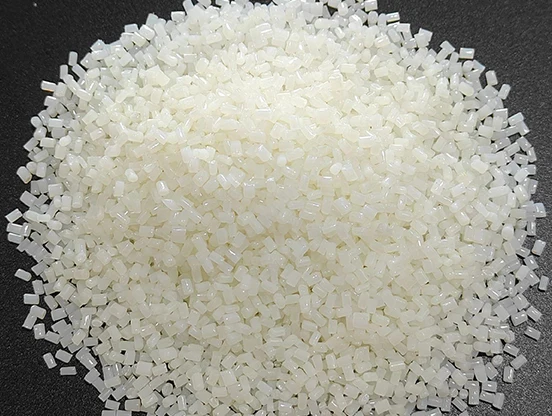
PPA
PPA (Polyphthalamide) is a high-performance semi-aromatic nylon (PA) used in injection molding for applications requiring high heat resistance, mechanical strength, and chemical resistance.
Key Characteristics of PPA for Injection Molding:
- High Heat Resistance – Can withstand continuous temperatures up to 260°C (500°F).
- Excellent Mechanical Strength – High stiffness and toughness, even in high temperatures.
- Low Moisture Absorption – Better dimensional stability than standard nylons (e.g., PA6, PA66).
- Chemical Resistance – Resistant to fuels, oils, and aggressive chemicals.
- Good Wear & Creep Resistance – Suitable for load-bearing and friction-intensive applications.
Common Applications of PPA in Injection Molding:
- Automotive – Under-the-hood components (e.g., fuel system parts, cooling system parts).
- Electronics – Connectors, insulators, and circuit breakers.
- Industrial Machinery – Gears, bearings, and structural components.
- Aerospace – Lightweight, high-performance structural parts.
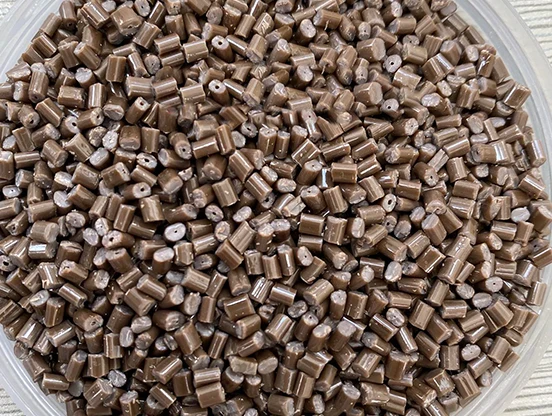
PPS
PPS (Polyphenylene Sulfide) is a high-performance thermoplastic polymer used in injection molding for applications requiring exceptional heat, chemical, and mechanical resistance.
Key Characteristics of PPS for Injection Molding:
- High Heat Resistance – Can withstand continuous temperatures up to 230-260°C (446-500°F).
- Excellent Chemical Resistance – Resistant to fuels, solvents, acids, and bases.
- High Mechanical Strength & Stiffness – Maintains strength even at high temperatures.
- Flame Retardant – Naturally self-extinguishing with a UL 94 V-0 rating.
- Dimensional Stability – Low moisture absorption and minimal thermal expansion.
- Wear & Creep Resistance – Performs well in friction-intensive applications.
Common Applications of PPS in Injection Molding:
- Automotive – Fuel system components, engine parts, and electrical connectors.
- Electronics – PCB components, sockets, and insulating parts.
- Aerospace – Lightweight, heat-resistant structural components.
- Industrial Machinery – Gears, valves, and pump components.
- Medical Devices – Sterilizable surgical instruments and housings.

PSU
PSU (Polysulfone) is a high-performance thermoplastic polymer used in injection molding for applications requiring high heat resistance, excellent mechanical strength, and chemical resistance.
Key Characteristics of PSU for Injection Molding:
- High Heat Resistance – Can withstand continuous temperatures up to 150-180°C (302-356°F).
- Excellent Mechanical Strength – Tough, rigid, and impact-resistant.
- Good Chemical Resistance – Resistant to acids, bases, and cleaning agents.
- Superior Dimensional Stability – Low shrinkage and high precision in molding.
- Good Electrical Insulation – Suitable for electronic and electrical components.
- Transparent & Amber-Tinted – Offers clarity similar to polycarbonate (PC).
Common Applications of PSU in Injection Molding:
- Medical Devices – Sterilizable surgical instruments, IV connectors, and dental tools.
- Automotive – High-temperature-resistant under-the-hood components.
- Aerospace – Lightweight, durable interior and structural parts.
- Electronics – High-performance insulating components.
- Food Processing – Heat-resistant food containers and filtration membranes.
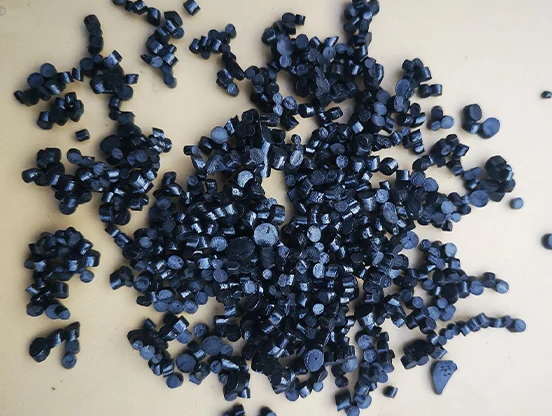
PU
PU (Polyurethane) is a versatile thermoplastic or thermosetting polymer used in injection molding for applications requiring flexibility, durability, and impact resistance. It is commonly used in industries such as automotive, consumer goods, and industrial applications.
Key Characteristics of PU for Injection Molding:
- High Flexibility & Elasticity – Can be molded into flexible or rigid forms depending on the formulation.
- Excellent Abrasion & Wear Resistance – Ideal for parts subjected to friction or high wear.
- Good Chemical Resistance – Resistant to oils, solvents, and fuels.
- High Impact Strength – Absorbs impact well, making it durable in tough environments.
- Good Load-Bearing Capacity – Can withstand heavy mechanical loads.
- Customizable Hardness – Available in a wide range of hardness levels, from soft and rubber-like to hard and rigid.
Common Applications of PU in Injection Molding:
- Automotive – Bumpers, seals, gaskets, and suspension bushings.
- Consumer Goods – Footwear, sporting equipment, and furniture cushions.
- Industrial Components – Wheels, rollers, and conveyor belts.
- Medical Devices – Catheters, wound dressings, and prosthetics.
- Packaging – Flexible packaging films, foams, and pads.
Elastic Plastic
Elastic plastics (also called elastomers or flexible plastics) are materials that can stretch, bend, and return to their original shape without breaking. These materials are commonly used in soft-touch, impact-absorbing, and flexible applications in various industries.
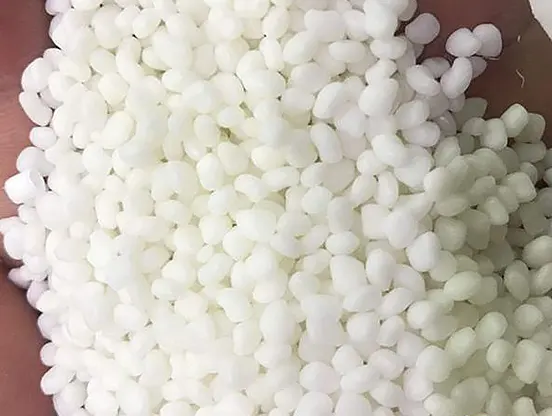
EPDM
EPDM (Ethylene Propylene Diene Monomer) is a synthetic rubber known for its outstanding durability, weather resistance, and versatility. It is made from ethylene, propylene, and a small amount of diene monomer, which helps create cross-links and improve elasticity.
Key Properties of EPDM:
- Weather and UV Resistance: Excellent resistance to sunlight, ozone, and aging, making it ideal for outdoor use.
- Temperature Resistance: Performs well in extreme temperatures, ranging from -50°C to 150°C (-58°F to 302°F).
- Chemical Resistance: Resists water, alkalis, acids, and some polar solvents, but is vulnerable to oils, fuels, and hydrocarbons.
- Elasticity: Maintains flexibility even in low temperatures.
- Electrical Insulation: Good electrical insulating properties.
Applications of EPDM:
- Automotive: Seals, weatherstripping, hoses, and gaskets.
- Construction: Roofing membranes, window and door seals, and expansion joints.
- Appliances: Washing machine hoses, refrigerator gaskets, and tubing.
- Industrial: Conveyor belts, gaskets, and protective coverings.
- Sports and Recreation: Playground surfaces, running tracks, and exercise mats.
EPDM’s excellent durability and weather resistance make it a preferred material for demanding applications where longevity and resilience are essential.
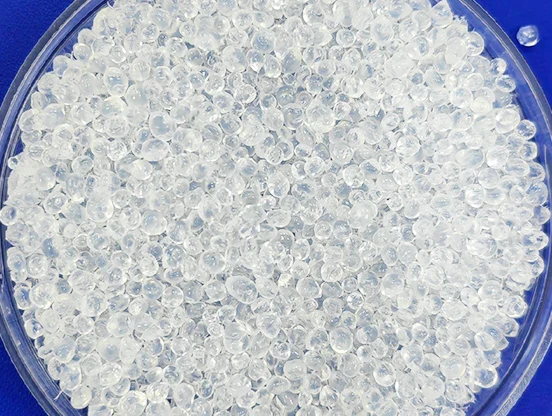
PEBA
PEBA (Polyether Block Amide) is a high-performance thermoplastic elastomer known for its exceptional flexibility, lightweight nature, and resistance to chemicals and impact. It is composed of alternating polyether and polyamide segments, giving it a unique balance of properties.
Key Properties of PEBA:
- Flexibility and Elasticity: Maintains elasticity across a wide temperature range (-40°C to 80°C / -40°F to 176°F).
- Lightweight: Lower density compared to many other elastomers, reducing overall weight in applications.
- Chemical Resistance: Resistant to oils, fuels, solvents, and various chemicals.
- Impact Resistance: Excellent toughness and durability, even at low temperatures.
- Moisture Resistance: Minimal water absorption, making it stable in humid conditions.
Applications of PEBA:
- Sports Equipment: Ski boots, running shoes, and flexible sporting goods due to its lightweight and resilience.
- Medical Devices: Catheters, tubing, and other components requiring flexibility and biocompatibility.
- Automotive: Cable sheathing, gaskets, and seals.
- Electronics: Wire coatings, connectors, and flexible device components.
- Textiles: Stretchable fabrics for sportswear and performance garments.
PEBA’s unique combination of lightweight strength, flexibility, and resistance makes it an ideal material for demanding applications across various industries.

TPE
TPE (Thermoplastic Elastomer) is a class of polymers that combines the elastic properties of rubber with the processability of thermoplastics. Unlike traditional rubber, TPE can be melted, molded, and recycled, making it a versatile and cost-effective material.
Key Properties of TPE:
- Elasticity: Provides rubber-like flexibility and softness.
- Thermoplastic Processability: Can be molded, extruded, and reused like plastic.
- Chemical Resistance: Resistant to many chemicals, oils, and weathering.
- Wide Temperature Range: Maintains flexibility and durability from -30°C to 140°C (-22°F to 284°F).
- Recyclability: Environmentally friendly due to its reusability.
Applications of TPE:
- Automotive: Seals, gaskets, and interior components.
- Consumer Goods: Grips for tools, sports equipment, and toys.
- Medical: Syringe plungers, tubing, and wearable devices due to its skin-safe properties.
- Electronics: Cable insulation, connectors, and protective cases.
- Construction: Sealing profiles, weatherproofing, and window gaskets.
TPE’s versatility, durability, and recyclability make it a popular material choice across a wide range of industries.
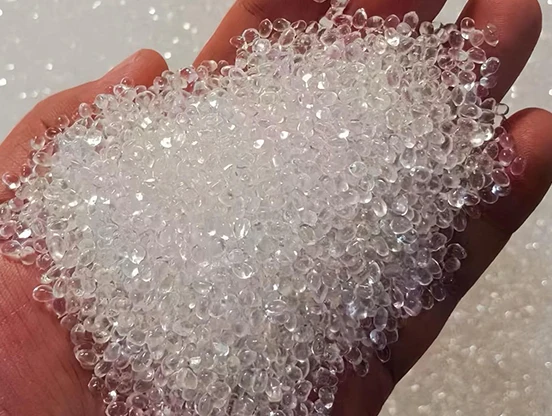
TPU
TPU (Thermoplastic Polyurethane) is a versatile, elastic, and highly durable polymer belonging to the thermoplastic elastomer (TPE) family. Known for its excellent flexibility, abrasion resistance, and chemical resistance, TPU is widely used in various industries.
Key Properties of TPU:
- Elasticity and Flexibility: Offers rubber-like elasticity while maintaining toughness.
- Abrasion Resistance: Resistant to wear, making it ideal for high-stress applications.
- Chemical and Oil Resistance: Can withstand many oils, greases, and solvents.
- Temperature Resistance: Performs well in a wide temperature range (-40°C to 80°C / -40°F to 176°F).
- Transparency: Available in transparent grades, making it suitable for aesthetic applications.
Applications of TPU:
- Footwear: Soles and sports shoe components for flexibility and durability.
- Automotive: Cable sheaths, gaskets, seals, and interior parts.
- Electronics: Protective cases for devices and cable insulation.
- Medical: Tubes, catheters, and other medical components due to its biocompatibility.
- Industrial: Conveyor belts, hoses, and protective films.
TPU’s unique blend of flexibility, strength, and durability makes it a popular choice across multiple industries.
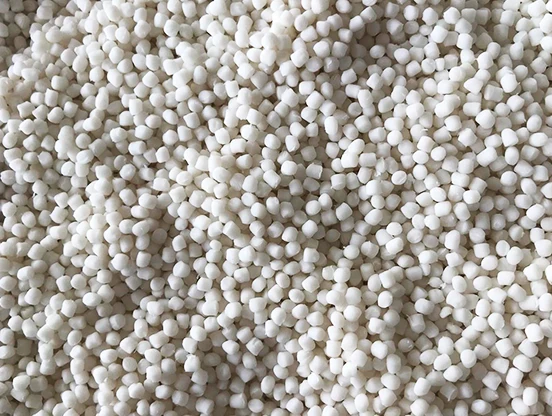
TPV
Thermoplastic dynamic vulcanizate (TPV) is a material that combines the elasticity of rubber with the easy processability of plastic. Often referred to as EPDM/PP material, TPV serves as a practical alternative to traditional rubber in many applications.
Key Applications of TPV:
- Automotive Industry: Commonly used for sealing strips, high-voltage ignition wires, dust covers, air intake and ventilation pipes, buffers, steering wheel covers, and fenders.
- Construction Industry: Ideal for sealing doors, windows, and curtain walls in buildings, providing reliable insulation and weather resistance.
- Electronics Industry: Utilized in manufacturing battery cases, cordless phone casings, transformer sheaths, headphone cable sheaths, connectors, power sockets, plugs, and more.
With its versatility and ability to replace conventional rubber, TPV is a valuable material across multiple industries.
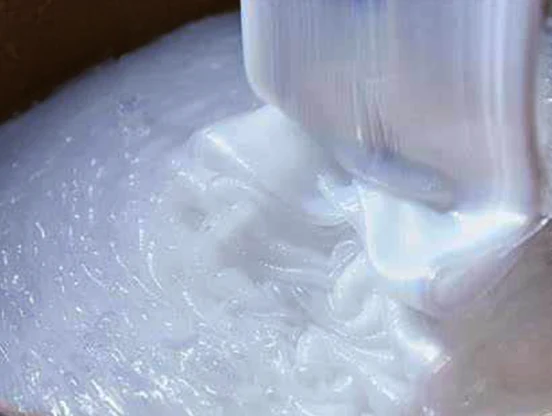
LSR
Liquid Silicone Rubber (LSR) is a non-toxic, heat-resistant, and highly resilient thermosetting material. It exhibits unique rheological properties, such as low viscosity, fast curing, shear thinning, and a high thermal expansion coefficient. Products made from LSR offer excellent thermal stability, cold resistance, and superior electrical insulation. Additionally, LSR does not release harmful substances when burned, ensuring safety and environmental friendliness. Due to these advantages, LSR is widely used in various industries, including healthcare, automotive, baby products, medical devices, diving equipment, kitchenware, and sealing applications. As a result, LSR has become an essential material in modern production and product design
Key Characteristics of LSR:
- Heat Resistance: Withstands extreme temperatures, typically ranging from -50°C to 200°C (-58°F to 392°F).
- Flexibility and Elasticity: Maintains flexibility over a wide temperature range.
- Chemical Resistance: Resistant to water, oils, and many chemicals.
- Biocompatibility: Safe for medical and food-grade applications.
- Durability: Resistant to UV radiation, ozone, and weathering.
Applications of LSR in Injection Molding:
- Medical devices (catheters, seals, masks)
- Automotive parts (gaskets, seals)
- Consumer products (baby bottle nipples, kitchenware)
- Electronics (keypads, connectors)
LSR injection molding is popular for creating complex geometries, intricate designs, and products requiring tight tolerances.
Other
We offer this form that only include a parts information about plastic. If you want to know more detail, please search professional sources.
| Type | Tensile Strength (Mpa) | Shrinkage (%) | Moisture absorption (%) | CLTE(×10-5 /K)/℃ | Density (g/cm3) | Price |
|---|---|---|---|---|---|---|
| ABS | 35-62 | 0.3~0.8 | 0.2-0.45 | 8 | 1.05 | $$ |
| HDPE | 27 | 2 ~ 5 | <0.01 | 12.5 | 0.95 | $$ |
| LDPE | 7.0-15.0 | 1.5~5.0 | <0.01 | 22 | 0.92 | $$ |
| HPVC | 45.7 | 0.6~1.0 | 0.07-0.4 | 5 | 1.5 | $$ |
| PA6 | 74 | 0.6~1.4 | 3 | 8.3 | 1.14 | $$ |
| PA6+30%GF | 110 | 0.3~0.7 | 1.1 | 2.2 | 1.37 | $$ |
| PA66 | 80 | 0.8~1.5 | 3.4~3.6 | 7 | 1.15 | $$ |
| PA66+30%GF | 189 | 0.2~0.8 | 0.5~1.3 | 1.38 | $$ | |
| PBT | 55 | 0.44 | 0.09 | 9.2 | 1.31 | $$ |
| PBT+30%GF | 137 | 0.2 | 0.07 | 2.7 | 1.53 | $$ |
| PET | 78 | 1.8 | 0.26 | 10 | 1.38 | $$ |
| PI | 100 | 0.75 | 0.3 | 3 | 1.38 | $$ |
| PMMA | 55~77 | 0.2~0.8 | 0.34 | 7 | 1.19 | $$ |
| POM | 62 | 1.5~3.5 | 0.21 | 8.5 | 1.41 | $$ |
| POM+25%GF | 130 | 2.6 | 1.61 | $$ | ||
| PC | 61 | 0.5 | 0.15 | 7.2 | 1.2 | $$ |
| PC+30%GF | 132 | 0.2 | 0.1 | 2.7 | 1.45 | $$ |
| PP | 29 | 1~2.5 | 0.01 | 8 | 0.9 | $$ |
| PS | 50 | 0.4~0.7 | 0.05 | 8 | 1.05 | $$ |
| PEEK | 103 | 10 | 1.3 | $$$$$$ |
Material | Flexibility | Impact Strength | Electrical Insulation | Temperature Resistance | Chemical Resistance | FDA Compliant | Cost (low to high) | Water Resistant |
|---|---|---|---|---|---|---|---|---|
| Acrylic (PMMA) | low | low | no | high | strong | no | medium | yes |
| Acrylonitrile Butadiene Styrene (ABS) | high | high | no | low | medium | no | medium | yes |
| Nylon Polyamide (PA) | high | high | yes | high | strong | yes | high | yes |
| Polycarbonate (PC) | high | high | no | high | weak | yes (can contain bisphenol A, or BPA) | high | yes |
| Polyethylene (PE) | medium (LDPE) low (HDPE) high (PET) | high (LDPE) high (HDPE) low (PET) | yes | low | strong (LDPE) strong (HDPE) strong (PET) | yes | low | yes |
| Polyoxymethylene (POM) | medium | high | yes | high | strong | yes | high | |
| Polypropylene (PP) | high | medium | yes | medium | strong | yes | low | yes |
| Polystyrene (PS) | medium | high | no | medium | yes | low | yes | |
| Thermoplastic Elastomer (TPE) | high | high | no | low | strong | no | high | yes |
| Thermoplastic Polyurethane (TPU) | high | no | high | strong | yes | medium | yes | |
| PC/ABS | low | high | no | medium | strong | yes | low | yes |
| PC/PBT | low | high | yes | high | medium | yes | medium | yes |
| PPE/PS | low | medium | no | high | medium | yes | medium | yes |
Resin Type | Benefits | Applications | Considerations |
|---|---|---|---|
POM or Acetal (Polyoxymethylene) | Tough, stiff, hard, and strong. Good lubricity and resistance to hydrocarbons and organic solvents. Good elasticity, slippery. Low creep. Great fatigue properties. | Gears, pumps and pump impellers, conveyor links, soap dispensers, fan and blower blades, automotive switches, electrical switch components, buttons, and knobs. | Due to shrink, you need uniform wall thickness. Painting, coating, and achieving high-cosmetic finish difficult. |
PMMA or Acrylic (Polymethyl Methacrylate) | Good optical properties, high gloss, scratch resistant. Low shrink, Less sink in geometries with thin and thick sections. | Light pipes, lenses, light shades, optical fibers, signs. | Can be brittle. PC is a good alternative. Draft always required, sometimes twice as much as other materials. Poor chemical resistance. |
ABS (Acrylonitrile butadiene styrene) | Tough, impact- and chemical-resistant, low shrink, high dimensional stability, inexpensive | Cosmetic parts, handheld devices, housings, and moldings for electrical tools, remote controls, computers, telephone components | Show knit lines and can have sink and voids in thick areas. You might be able to reduce sink by switching to an ABS/PC-blend. |
HDPE (High-density polyethylene) | Tough, impact- and chemical-resistant, high shrink, low dimensional stability, inexpensive, density less than water (floats) | Lawn furniture, totes, containers, toys, gas cans | High shrink, low surface energy |
PC (Polycarbonate) | Strong, extremely impact resistant, low shrink, good dimensional stability and heat resistance, accepts high cosmetic finishes well | Lenses, indoor and outdoor lighting, cell phone housings, electrical components, medical devices, bulletproof glass. | Possible sensitivities in thick sections of parts could cause voids, bubbles, and sink. Poor chemical resistance. An ABS/PC blend is a good alternative for opaque parts with these issues Acrylic is another option for parts with thick geometries. |
ABS/PC | Strength, heat and low-temperature resistance, improved processing, | Automotive, electronic, telecommunications | Improved thick molding and mechanical properties compared to just ABS or PC. Lower cost than PC. |
PP (Polypropylene) | Inexpensive, higher impact resistance in some grades, PP homopolymer can be brittle in cold. Wear resistant, flexible with high elongation. Resistant to acids and bases. Density less than water (floats) | Integral hinges or living hinges, fans, snap-over lids (e.g., shampoo bottle tops), medical pipette tubing | Thick sections in part geometry can void or show sink marks. Shrink and warp possible. If the part has living hinges that require higher stiffness, K-Resin is a good alternative. |
Polystyrene (PS) | high optic clarity, good electric insulator | plastic utensils, containers, optics, toys | brittle, poor UV resistance, very susceptible to hydrocarbon solvents |
PEEK (Polyether Ether Ketone) | High-temperature, high-performance, flame retardant; excellent strength and dimensional stability, good chemical resistance | Bearings, piston parts and pumps; cable insulation; compatible with ultra-high vacuum applications. | High-performance material, very expensive. Ultem (outlined below) is a slightly less-costly option, and PPSU is worth considering if price is a concern. |
PEI or Ultem (Polyetherimide) | High-temperature, high-performance, flame retardant, excellent strength and dimensional stability, good chemical resistance. | Medical and chemical instrumentation; tableware and catering; HVAC and fluid handling; electrical and lighting. | Very expensive, though not as costly as PEEK. Look at PPSU as a possible alternative. |
PPSU (Polyphenylsulfone) | High-temperature tolerance, dimensionally stable, high toughness. Resistance to radiation sterilization, as well as alkalis and weak acids | Medical instrument components, sterilization trays, automotive fuses, interior aircraft parts, hot water fittings, sockets, and connectors. | Thick sections could result in voids, bubbles or sink. Organic solvents and hydrocarbons can also attack PPSU. Colorant cannot be added to Protolabs-supplied PPSU resins |
PA (Aliphatic Polyamides) | Wide variety. High strength and temperature tolerance when reinforced. Chemically resistant except to strong bases or acids | Thin-walled features, combs, spools, gears and bearings, screws, structural parts (with glass), pump parts, under-hood components, cameras. | Some nylons can be susceptible to warp due to non-linear shrink. Absorbs moisture, causing issues. |
PPA (Semi-aromatic Polyamides) | less susceptible to moisture than aliphatic polyamides | automtive housings, modules, valves, sports equipment | susceptible to warp |
PBT (Polybutylene Terephthalate) | Good electrical properties for power components and works well for automotive applications. Moderate to high strength depending on glass fill. Unfilled grades are tough and flexible. Good resistance to fuels, oils, fats, and many solvents. Doesn’t absorb flavors. Low creep. | Slide bearings, gears and cams; coffee makers and toasters; hair dryer nozzles; vacuum cleaners; handles and knobs for electrical cookers. | Glass-filled PBT resins are prone to warp, and have poor resistance to acids, bases, and hydrocarbons. Thin parts hard to fill with PBT. Nylons are good alternatives. |
PET (Polyethylene Terephtalate) | similar to PBT, but stiffer and higher melting point | similar to PBT | similar to pbt |
LCP | very easy flowing, good chemical resistance, high upper use temp, good electrical properties, low thermal expansion | connectors, plugs, PCBs, sports equipment | anisotropic properties and shrinkage, expensive |
PPO | good electrical insulator, hot water / steam resistance | sensor housings, pumps, connectors | susceptible to stress cracking |
PPS | very good chemical resistance, high upper use temp, great electrical properties | electric components, automotive intakes / pumps / valves / sensor encapsulation | desirable properties, such as chemical resistance rely heavily on proper crystallization during molding |
